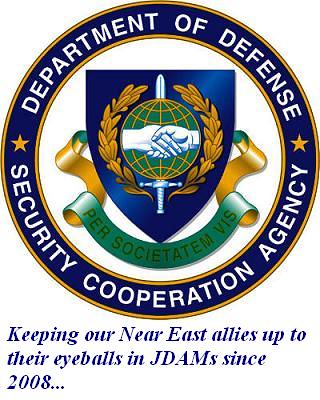One news item from recent headlines is Bush administration's plans to build up a tighter anti-Iran block in the Near East through arms deals. Specifically, they plan to sell at least $20 billion worth of arms to the members of the Gulf Cooperation Council (Saudi Arabia, Bahrain, Kuwait, Oman, Qatar and the United Arab Emirates), as well as increase the amount of military aid given to Israel and Egypt.

Before I critique the Bush administration's approach, I would like to correct a common misunderstanding about U.S. arms sales to the Near East. First of all, the U.S. sells hundreds of millions of dollars worth of arms to GCC states on an annual basis. Between 2000 and 2006 alone, Saudi Arabia purchased $5.8 billion worth of defense articles and services through the Foreign Military Sales system. We also signed off on direct commercial sales of $1.8 billion worth of U.S. defense articles and services to the Saudis as well. (Both FMS and DCS numbers compiled from annual reports, send me an e-mail if you want them in a spreadsheet.)
The Bush administration is proposing that we relax some of the limitations we have placed on the types of weapons the U.S. can sell to Saudi Arabia. To be fair, some of these restrictions were based on tensions between Israel and its Arab neighbors, so relaxing them now makes sense in the face of recent Arab-Israeli detente. If we're going to sell arms to the GCC states anyways, we might as well sell them as much as we can for practical economic reasons, if not strategic ones. As one Navy-focused blogger points out, if the Saudis can't buy more advanced weaponry from the United States, there are plenty of other relatively advanced arms exporting states willing to fill the gap.
The real flaw of this decision is that it will probably do nothing to achieve its intended goal of adjusting the military balance between the GCC states and Iran. As Bill Arkin aptly points out, the Saudis and their GCC neighbors aren't planning on buying the advanced weapons we are offering in large enough quantities to be useful. His point about the drivers and limitations behind Saudi procurement planning is particularly important. The Saudis will only buy enough JDAMs, F-16s and M1A2s to keep their prince-generals happy. They cannot buy enough to become a force of reckoning the Near East because they afraid of making their military too powerful.
If you take a look at the publicly available Function 150 sales toplines published by the State Department, there appears to be some evidence of this. The Saudis averaged about $700-800 million in arms purchases between 2000 and 2006. If you look at the 655 Reports that the Federation of American Scientists obtained for these years, the largest portion of annual Saudi purchases are for defense services (i.e. maintenance, logistics, administration, training, etc.).
Even though this $20 billion deal will effectively double Saudi spending on arms imports, I am sceptical about how much of this spending will actually go to platforms. History doesn't paint an optimistic picture. If the arms sales only serve as a window dressing on the U.S. side (subject to interpretation) of the military balance across the Persian Gulf and if al Qaeda uses U.S. arms sales to House of Saud as a justification for its mission, then why sell them arms to begin with? The only reason I can think of is that we really have viable alternative.
Our hands are tied by decades of 'lowest common denominator' policy-making capped off by the invasion of Iraq and the complete collapse of the Bush administration's freedom agenda.
Oh well, just add the Near East to the list of Baby-Boomer legacies that my generation will spend their entire careers trying to fix.

No comments:
Post a Comment